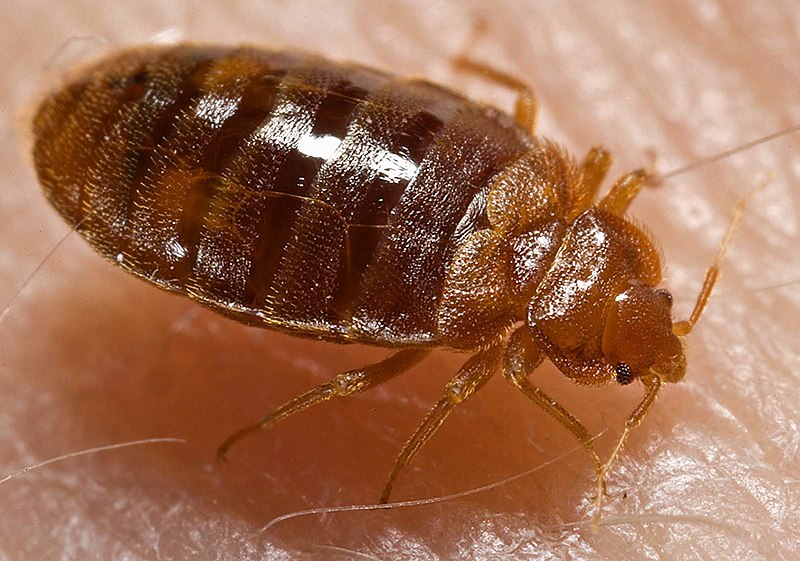The Ultimate Bed Bug Treatment Handbook: Everything You Required to Do well
The Ultimate Bed Bug Treatment Handbook: Everything You Required to Do well
Blog Article
Discover the most effective Bed Pest Therapy Techniques for Your Parasite Control Plan
When faced with a bed pest invasion, identifying the most efficient therapy methods ends up being critical for effective parasite control. Choosing the ideal bed bug treatment technique tailored to your specific circumstance is vital for accomplishing long-term results.
Identifying Bed Pest Problems
Identifying signs of a bed insect invasion can be critical in efficiently addressing the concern and avoiding further spread in a prompt manner (Bed bug treatment). Bed bugs are elusive bugs that conceal throughout the day and come out during the night to prey on blood. Typical signs of a bed bug problem consist of reddish-brown stains on bedding or furniture from smashed insects, little dark areas that are bed pest waste matter, lost skins in areas where bed pests conceal, and a sweet, moldy smell in serious infestations
Trigger recognition of a bed insect infestation is essential to protect against the situation from rising and calling for much more comprehensive therapy techniques. If you presume a bed insect infestation, it is recommended to look for professional insect control support to efficiently remove the insects from your home.
Non-Chemical Therapy Methods
Non-chemical therapy techniques provide efficient choices for addressing bed bug problems without relying on standard pesticides. Warm treatment is one such method that includes increasing the temperature in infested areas to levels that are deadly to bed bugs. Additionally, heavy steam therapy can be employed to kill bed pests and their eggs by exposing them to high temperatures, making it an important non-chemical option for combating problems.
Chemical Therapy Alternatives
Having actually checked out effective non-chemical methods for addressing bed bug problems, it is vital to consider the efficacy of chemical treatment alternatives in combating these durable pests. Chemical therapies play a critical duty in bed insect control, specifically in extreme invasions where non-chemical approaches might not offer sufficient alleviation. There are numerous kinds of chemical therapies readily available for managing bed insects, consisting of insecticides, desiccants, and insect development regulatory authorities.
Insecticides are typically used to eliminate bed bugs on get in touch with and deal recurring security against future problems (Bed bug treatment). Desiccants work by damaging the outer waxy layer of bed insects, resulting in dehydration and death. Insect growth regulators interrupt the bed pest life process by hindering their development from fairies to adults, ultimately lowering the population gradually
When thinking about chemical treatment options, it is vital to focus on safety by complying with tag instructions, making use of proper protective gear, and taking into consideration the potential dangers to humans and family pets. Consulting with an expert bug control solution can help identify one of the most efficient and risk-free chemical therapy for your specific bed insect invasion.
Integrated Parasite Administration Approaches

IPM approaches for bed pest control may consist of extensive assessment to figure out the extent of problem, recognition of crucial harborage sites, and implementation of hygiene procedures. Additionally, reducing clutter, sealing splits and gaps, and removing possible hiding places can help hinder bed insects from developing themselves.
Additionally, non-chemical control approaches such as warmth therapy, vacuuming, click here for more info heavy steam cleansing, and using bed insect catches can be reliable parts of an IPM strategy. These strategies target bed bugs at various life phases and disrupt their reproductive cycle, resulting in population reduction.
Regular monitoring and follow-up evaluations are important in IPM to analyze the performance of control measures and make essential changes. By including integrated pest administration approaches into your bug control strategy, you can attain long-lasting success in taking care of bed insect infestations.
Expert Elimination Solutions
Expert elimination services provide specialized knowledge and resources for effectively getting rid of bed insect problems. Bed pest invasions can be particularly challenging to tackle as a result of their strength and ability to hide in different cracks and holes. Professional exterminators are trained to identify the indications of bed bugs, situate their hiding spots, and use targeted treatment methods to eliminate them efficiently.
When selecting a specialist elimination service for bed insect control, it is necessary to seek certified and qualified bug control business with experience in dealing specifically with bed insects. These experts have accessibility to a series of therapy choices, consisting of chemical and non-chemical approaches, to properly fight bed bug invasions while ensuring the safety and security of owners and pet dogs.
Additionally, expert exterminators can provide follow-up evaluations and therapies as required to make sure that the infestation is fully eliminated. Their competence in bed insect actions and treatment protocols can help stop future invasions, offering comfort for house owners and services alike. When faced with a stubborn see this bed insect invasion, getting the solutions of expert pest control operators is commonly one of the most reputable remedy to achieve complete eradication.
Final Thought

When faced with a bed pest problem, identifying the most efficient treatment techniques comes to be essential for successful pest control. Common indications of a bed insect infestation consist of reddish-brown discolorations on bed linens or furniture from smashed insects, small dark places that are bed insect excrement, shed skins in areas where bed insects hide, and a sweet, musty smell in serious invasions.
Having actually checked out effective non-chemical approaches for addressing bed pest invasions, it is necessary to consider the efficiency of chemical therapy alternatives in combating these durable bugs. Chemical treatments play a critical role in bed pest control, particularly in serious problems where non-chemical methods may not provide adequate relief. By integrating these various therapy approaches right into an extensive insect control plan, individuals can effectively get rid of and handle bed bug invasions in their organizations or homes.
Report this page